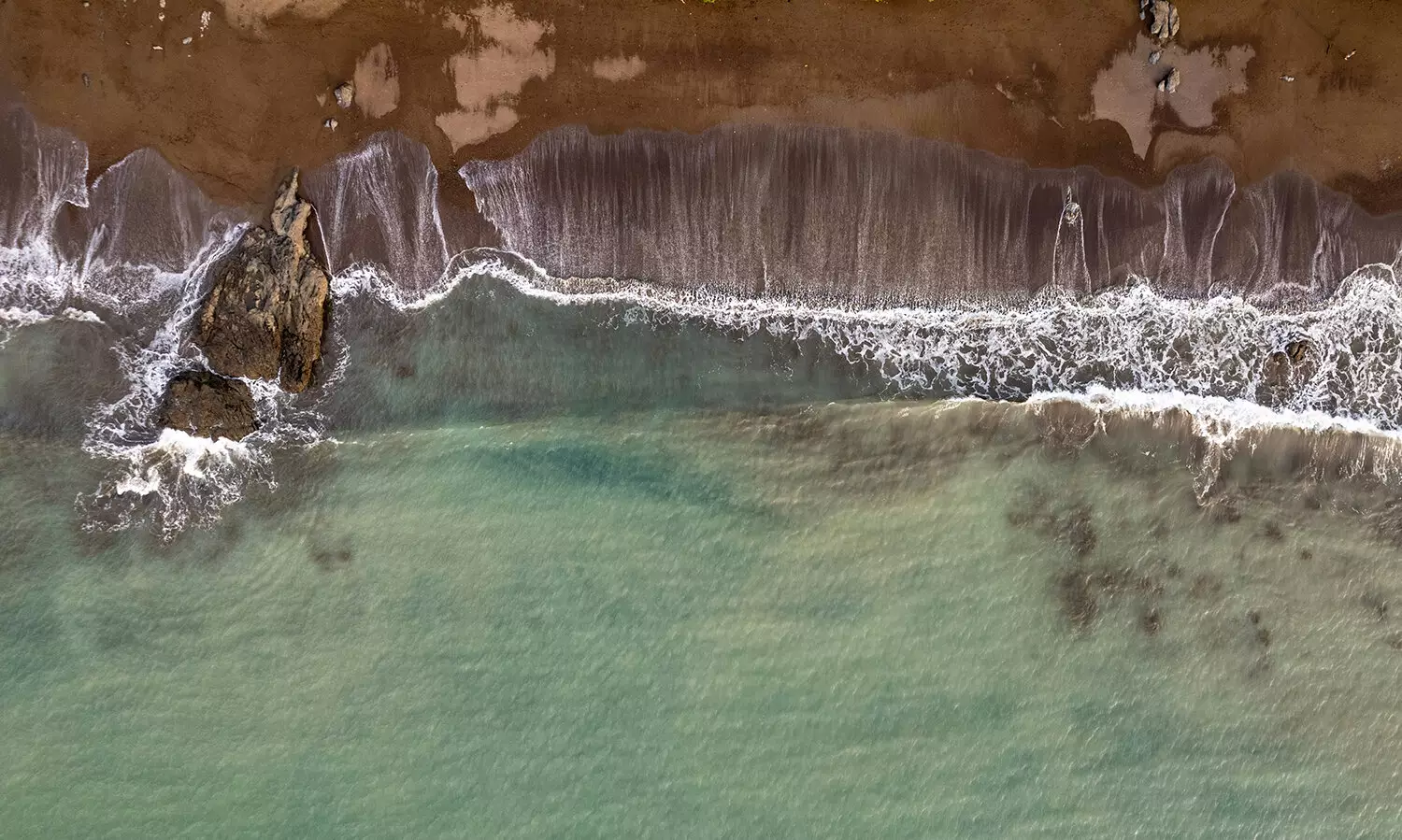About 34 million years ago, one of the most significant shifts in Earth’s climate took place: the transition from the warm, lush conditions of the Eocene epoch to the cooler, harsher environment of the Oligocene epoch. This period was marked by a substantial drop in global temperatures and sea levels, conditions that should have theoretically led to widespread erosion and sediment deposition across the ocean floor. Conventional geological models suggested that this drastic climate change would produce significant amounts of sandy deposits as sediments washed off continental margins. However, recent research from Stanford University paints a starkly different picture, demonstrating a puzzling gap in the geological record from this era.
Researchers examined extensive geological studies spanning decades, uncovering a concerning trend: negligible sediment deposits attributed to this critical climate transition have been found along the continental margins of all seven continents. Published in the journal Earth-Science Reviews, the findings raised more questions than answers, prompting senior author Stephan Graham to ask, “Where did all the sediment go?” This question is pivotal, as sediment deposition and erosion play fundamental roles in the Earth’s geological processes. Recognizing this gap in the record will enhance our understanding of how climate change has historically shaped marine sedimentary systems.
This groundbreaking research, led by Zack Burton and supported by renowned scholars from Stanford, highlights an underexplored aspect of Earth’s geological history—the response of sedimentary systems to severe climatic changes. By synthesizing data from hundreds of studies—including offshore and onshore geological examinations—Burton and his team aimed to provide a holistic view of sediment patterns during this transformative period.
Interestingly, prior studies conducted by Burton’s team revealed thriving sand-rich deposits in marine basins during the early Eocene epoch, when global temperatures were at their warmest. Erosion intensified during this period, attributed to extreme climatic conditions that enhanced weathering processes on land. These findings established a clearer link between climatic conditions and sediment deposit formation. However, this correlation was unexpectedly severed as the planet transitioned into the late Eocene and early Oligocene, when a profound cooling phase began—one that seemingly eradicated the mechanisms responsible for sedimentation.
This research divergence from the earlier findings highlights the precarious balance between climate and geological processes. The authors used a methodical approach to comb through extensive geological literature, analyzing sediment characteristics that lay buried kilometers below ocean floors. They scrutinized scholarly articles spanning from a century ago to the present, measuring sediment accumulation rates in various contexts. Despite expectations of abundant sedimentation during the extreme climate shifts, the research team repeatedly encountered gaps in the sedimentary record, indicating widespread erosional unconformities instead.
The researchers proposed several theories to explain the failure of sedimentation during the Eocene-Oligocene transition. One suggestion involved the influence of vigorous ocean currents driven by climate-induced temperature and salinity fluctuations. These currents could have intensified under the altered climatic conditions, leading to the erosion of the ocean floor and displacing sediment far from their original sources. Additionally, as sea levels fell, continental shelves emerged, potentially allowing sediments to bypass nearer sedimentary basins, thus depositing them further out into the depths of the ocean.
Furthermore, localized effects of glacial erosion, particularly around Antarctica, may have contributed to this phenomenon. As massive ice sheets formed on the continent, they may have reshaped local geological dynamics, facilitating similar erosive conditions across global oceanic basins. These pervasive influences underscore the conclusion that climate change during this pivotal period exerted a widespread and uniform impact on sedimentary processes—an observation that resonates with the current concerns about human-induced global warming.
Although the scale of climate change we witness today is comparatively smaller than the monumental shifts seen during the Eocene-Oligocene transition, the speed at which it is occurring raises alarm bells. The findings from Graham, Burton, and their team can offer crucial insights into understanding the magnitude and immediacy of the changes wrought by today’s climate crisis. Their research urges us to consider not only the potential for rapid shifts in sedimentation and erosion but also the far-reaching consequences of ecological and environmental disturbances associated with climate change.
By analyzing the sedimentary record of the past, we can glean valuable lessons on how to better prepare for and understand the complex interrelationships between climate dynamics and geological processes now unfolding on our planet. A deeper investigation into historical geological events, as suggested by Graham, is essential, as it could provide critical insights needed to navigate the uncertainties of our current climate challenges. The ongoing exploration of Earth’s sedimentary past could offer both warnings and pathways toward understanding the complex web of interactions that govern our planet’s response to climatic changes.

